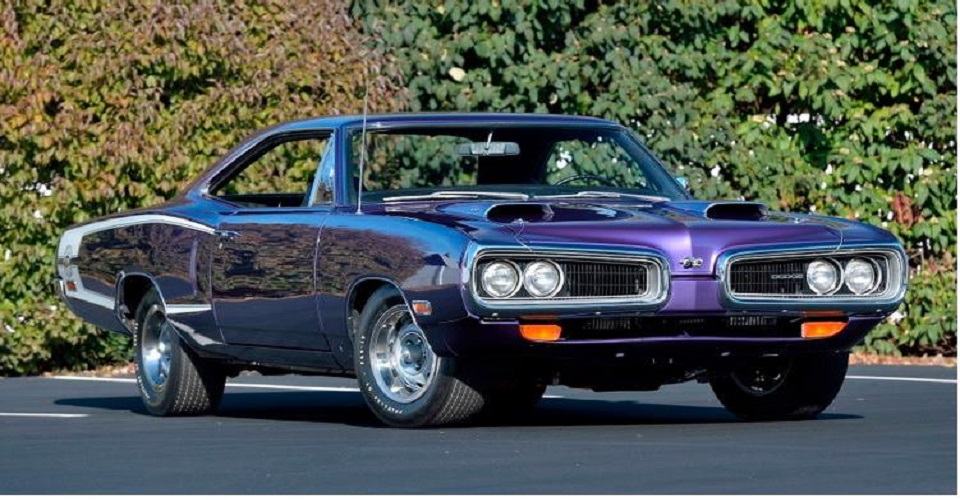1968-70 Dodge Super Bee and interesting things about it.
When it comes to the world of classic American muscle, few time periods were as glorious as the tail end of the 1960s. Seeing some of the coolest, most unrestrained, and badass models released, many of the V8 beasts from this time hold up today as absolute legends. Among them for example, the Pontiac GTO reached a new peak, and so did most of the mid-size field including competitors like the Plymouth GTX and Ford Torino. Also seeing new growth in the realm of affordable spec muscle, Plymouth’s GTX based Road Runner sparked a popular wave of similar models like the GTO Judge.
One name from this time and class of muscle car happened to be just as good but much less remembered than the competition though – the Dodge Super Bee. Lasting from 1968 until 1970, the Super Bee name moved on to be attached to the Charger in ’71, then died off until its 2000s Charger-based return. A work of classic muscle art, this original Coronet-based Super Bee is a highly underrated classic from the Golden Age of muscle.
A Sting Inspired By Plymouth:
To understand the Super Bee, you in turn have to understand its fraternal twin brother, the Plymouth Road Runner. Back before its release, to get top-end V8 muscle you had to pay top-end dollar, with a full list of options to tick off in order to receive a desirable engine. As an example of this within Chrysler, Plymouth’s GTX was a B-Body based Belvedere that came almost fully loaded with all the best trimmings, and that included the best engine, namely the 440 Super Commando or 426 Hemi.
Meanwhile, Dodge’s version of the B-Body was the Coronet, and the Coronet R/T was their equivalent mid-size muscle car. None of this is too surprising though, but the pricing and necessary options for ground shaking V8s meant muscle was moving away from its straightforward performance-oriented origin, and younger buyers were priced out of the mid-size muscle field, so in 1968 Plymouth decided to change that.
Positioned as a higher-end brand to Plymouth at the time. So, in 1968 during the Road Runner’s debut year, the Super Bee was launched at the Detroit Auto Show with the same formula, purpose, and platform. While the 383 V8 was meant to be only used by the Road Runner, Dodge ignored that memo and bestowed it into the Super Bee, carrying out a similar options diet to give it a lower price. While it had a slightly different front end design, 1″ longer body, and dashboard from the Charger, this new Super Bee mechanically was basically the same car as the Road Runner and had that same 426 Hemi as an optional engine, and similarly raised the price by around 33%, if chosen. The main difference was the name, and the Super Bee was a clever pun (Bee = B-Body), with special badges themed around it.
Further Changes & Evolution:
In regards to performance-based upgrades for the Super Bee, more than just the Roadrunner 383 V8 came standard. Offering heavy-duty drum brakes, beefier suspension components, as well as a 4-speed manual with Hurst shifter and linkages (a 3-speed Torqueflite auto was optional). Also, as a more upscale brand to Plymouth, further touches made the Super Bee a slightly more expensive alternative to the Road Runner, including previous features like the Hurst shifter and linkages, as well as aesthetic touches like 3D diecast metal Super Bee badges in contrast to the Road Runner’s simple decals. With the Road Runner cheaper and just as fast, alongside the now iconic, but then newly introduced 2nd gen Charger on sale, the Super Bee just couldn’t capture the Road Runner’s magic when it came to sales and lagged behind.
Updated for 1969, the Super Bee looked, and was, mostly the same, only offering new bits like optional side-mounted hood scoops, as well as a new grille and headlight design. But, halfway through the year, Dodge offered a new engine for it that would make things truly awesome, the 440 cu-in Six-Pack V8 – so named for its array of three 2-barrel carbs feeding the engine. An expensive option, the 425 hp 426 cu-in Hemi saw just over a hundred buyers in the Super Bee, so, while making 35 hp less, the 390 hp 440 Six-Pack was still a huge improvement thanks to a far lower price.
A Classic Cockpit:
ike the rest of 1960s muscle, the Super Bee’s interior is extremely basic compared to today’s cars, stunning with details rather than a feature-packed design. Even truer thanks to its budget muscle purpose, the Super Bee was slightly higher-end than the Road Runner, but the theme of stripping options remained, though with a few nice touches to go around. Included in this, optional vinyl bucket seats and the standard Hurst shifter were cool, but the overall impact is in how straightforward and purposeful the interior is, with the Charger’s clean, rounded all-analog gauge filled dashboard looking sweet inside the Coronet, and bits like the wood steering wheel to complete the look.
In terms of spaciousness, the Super Bee was as roomy as it was powerful, even when it came to rear seats. Measuring in with 34.6” of headroom and 42” legroom for the front seats, rear passengers also got similar space with 37” of headroom and 41” of legroom. For comparison, a 2021 Dodge Charger has 38.6″ of headroom and 41.8″ of legroom up front, and in the back, seats get 36.6″ of headroom and 40.1″ of legroom – though is a 4-door design compared to the Super Bee’s 2-door coupe body. Further, a huge trunk made it a great cruiser, but the massive unrefined V8 gives horrible mileage, with 10 MPG at best for the 440 Six-Pack – not that it matters when driving a muscle car.









I have a 1968 Dodge Coronet 500 2 Dr. Factory numbers matching Block. Body is in good shape. Any idea on what the value of it would be???